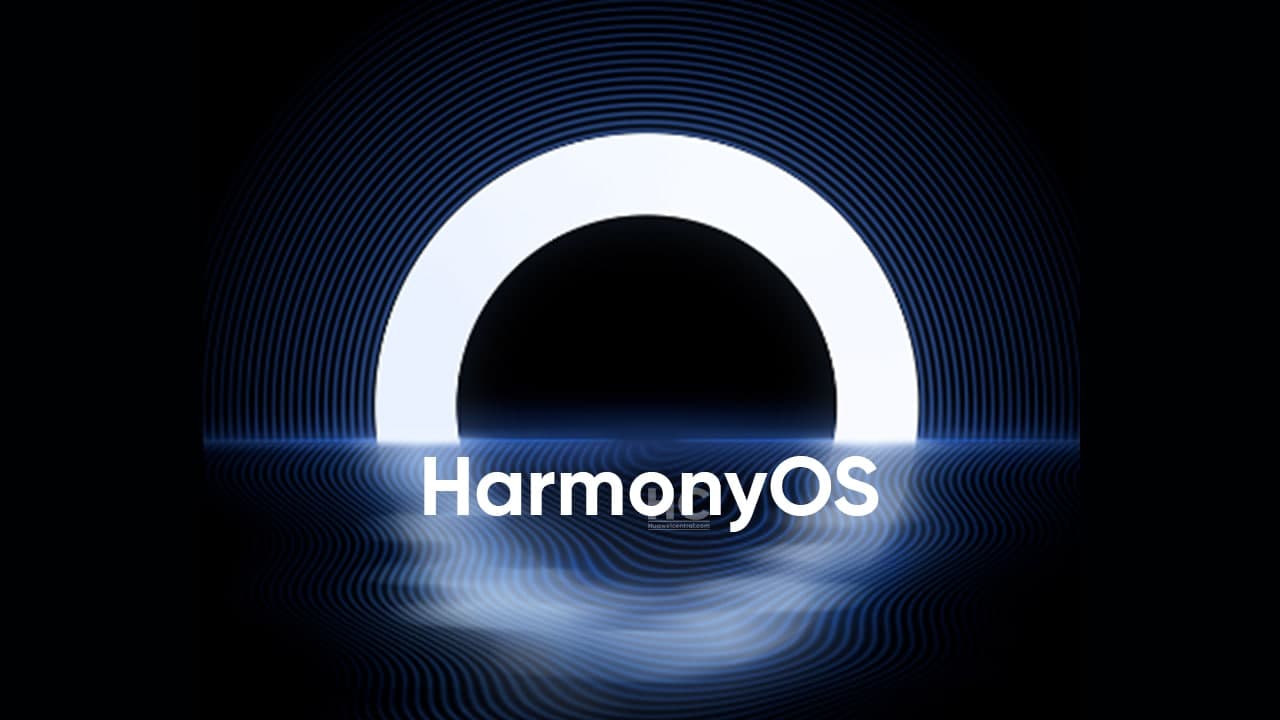HarmonyOS
HarmonyOS 2 vs EMUI 11: Apps, Game and Background process comparison on Huawei Mate 40 Pro
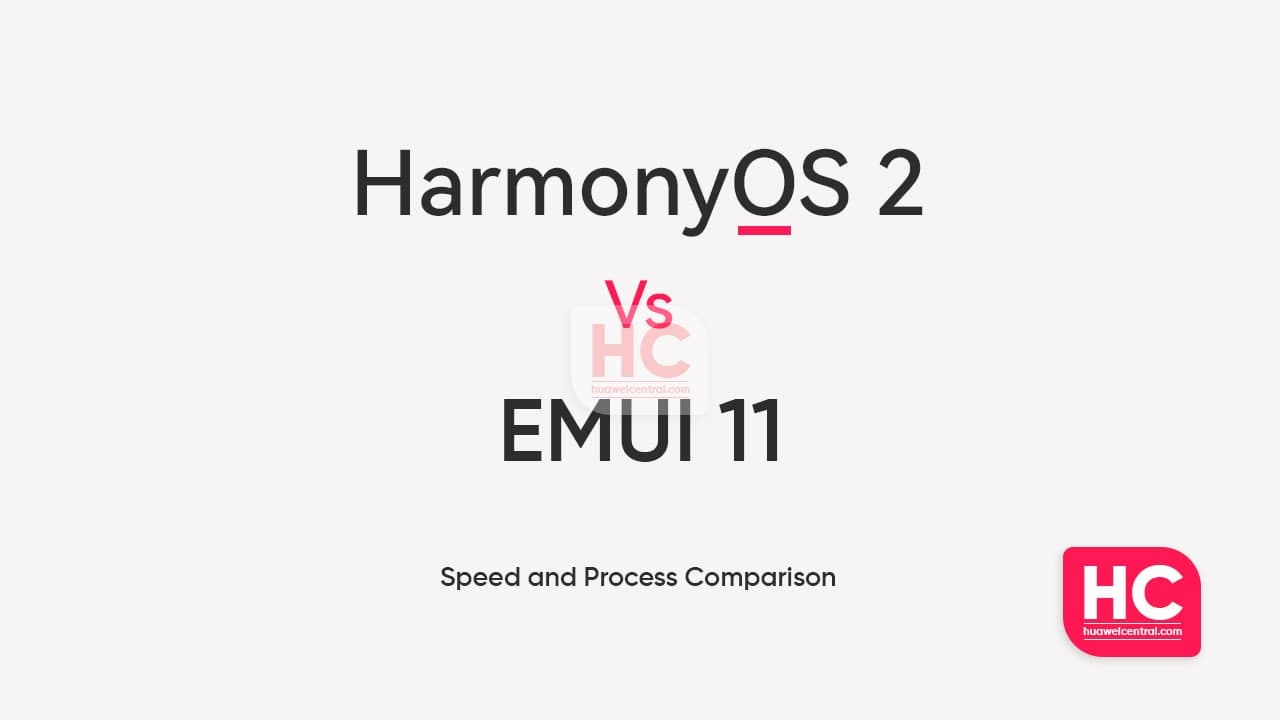
June 2nd, 2021, remains a remarkable day in Huawei history, as the company brought a new operating system – HarmonyOS 2.0 and a number of new devices powered by this OS.
Following the launch, Huawei began to recruit the eligible devices for beta testing and released the developer open beta, closed beta, and public beta updates. Still, the upgrade activity is in progress and will make its way from the Mainland market to a global scale as soon as possible.
Speaking of the upgrade process, it took only a few days for HarmonyOS in reaching over 10 million devices while these numbers exceeded 18 million by June 15th. It’s showing the huge popularity of Huawei among the consumers and partners.
At the same time, you can also see the third-party applications adopting the HM OS interface, while other developers are working to adopt it. Now, the question is why HarmonyOS is attracting the users as well the third-party providers, even when it’s still limited to the Chiese market?
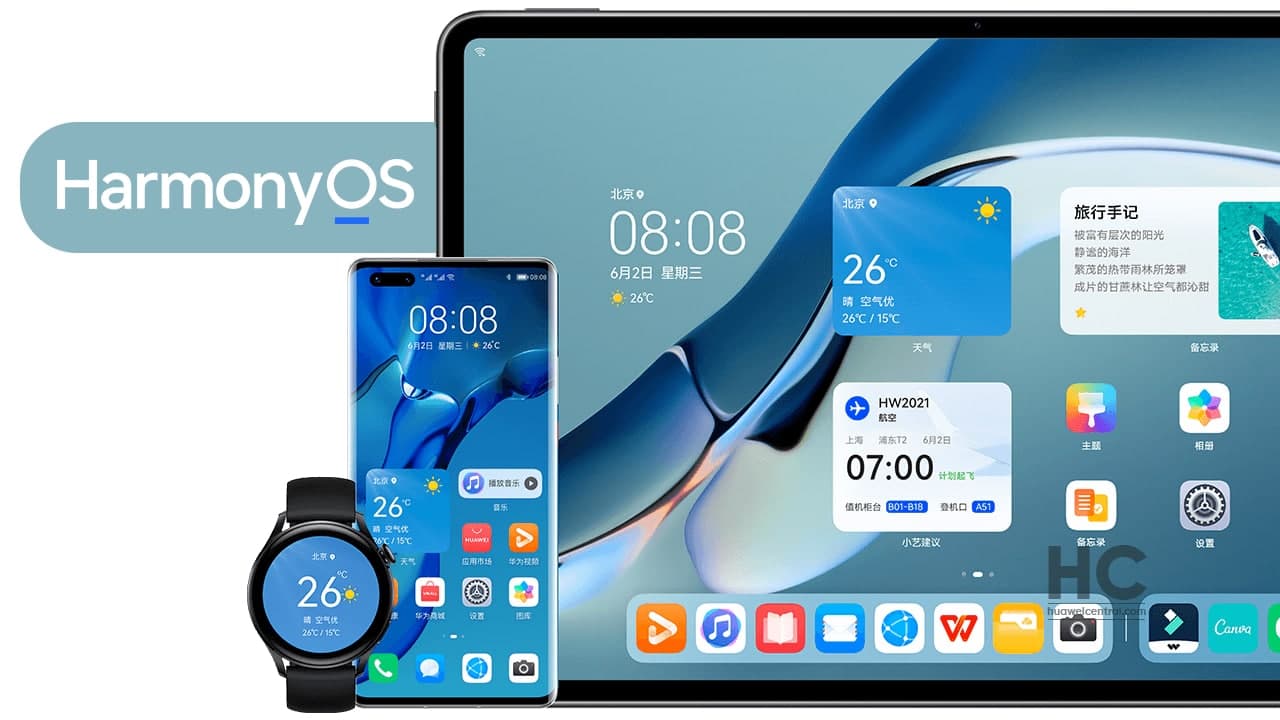
Indeed HarmonyOS is a domestic product but it’s not the only reason behind its support. The astonishing performance of HarmonyOS and the new distributed capabilities also performs a huge role in the play.
But we’re here to talk about check the evaluation between HarmonyOS powered Huawei Mate 40 Pro against the same device with EMUI under different scenarios.
The result of these tests goes in the favor of HarmonyOS and this new OS has an advantage over EMUI in terms of app startup speed, game frame rate, background app activity, and overall battery life performance.
Let’s dive into the evaluation.
Note: These tests are done on the Chinese version of the apps, as the HarmonyOS is currently only available for the Chinese models.
We’ll discuss them one by one in this article, so let’s get started-
Application Startup Speed: No more dealy
The application startup speed is one of the basic features and an important aspect of any mobile operating system. In the case of HM OS, it won by 5 seconds against EMUI 11.
This test includes 20 commonly used mainstream apps including WeChat, Weibo, QQ, Taobao, and Jingdong, etc and tests two rounds of app opening tests.
The EMUI installed Mate 40 Pro took 119 seconds while the HarmonyOS installed Mate 40 Pro took 114 seconds only. Furthermore, the responding time is also quicker in HM OS than in the previous EMUI. (Read More)
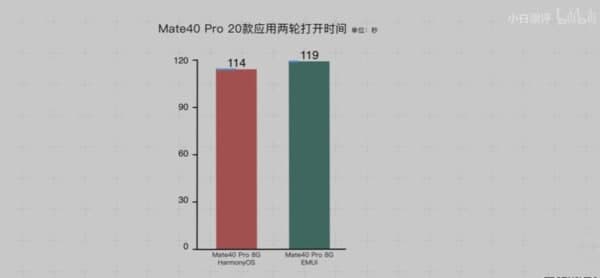
Why HarmonyOS opens apps faster:
The reason is pretty simple, the Android system is restrained by its architecture as it loads the application interface first, and then loads the animation. Unlike Android, HarmonyOS architecture doesn’t follow this protocol, which results in faster performance.
To be more precise, the HarmonyOS 2 works on the high-performance motion engine, which explores the ability to decouple system motion and application interfaces. Thus, application interfaces and motion effects can load simultaneously and don’t show any delay for faster access.
This etiquette helps the user to enjoy the smooth interface, while the users switching the application and invoking other operations. The system continuously delivers smooth and shutter free-motion effects without stuttering.
Many users have also found that after upgrading to HarmonyOS, older models can also bring a smoother experience. Android phones tend to accumulate a large number of fragmented junk files during long-term use.
After upgrading HarmonyOS, the file system will be intelligently maintained. The smart space cleaning algorithm dynamically adjusts space recycling and space allocation strategies based on the degree of system fragmentation, based on smart space.
The cleaning algorithm finds the optimal strategy and completes the deep cleaning and optimization of the file system without affecting the user’s operation so that the file read and write has been maintained in a high-performance state.
This excellent feature of HarmonyOS 2 can keep the smartphone smooth after 36 months of use, and of course, it can also make the old models shine in the new year.
Game Performance: No more disturbance and extra power consumption
The game performance test was performed on two famous mobile games in China- PUBG, and King of Glory.
The HarmonyOS equipped smartphone delivers 90.17 frames per second, an average fluctuation of 0.69 while the power consumption is as low as 3.77W.
Meanwhile, the EMUI equipped smartphone performance 88.83 frames per second, 1.79 of fluctuation, and 3.86W power consumption. Although the difference is slight, it makes hug differed in terms of performance.
Moreover, HarmonyOS provide a better gaming experience than EMUI not only with a higher frame rate but also with stability and less power consumption.
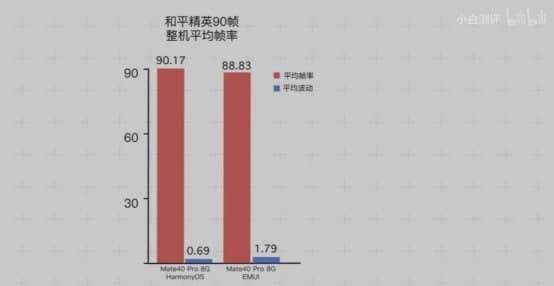
Reason:
The powerful gaming performance of HarmonyOS comes from its graphics engine. The graphics stack adopts the smart computing and scheduling commanding approach.
The GPU and CPU cooperatively complete scheduling and rendering, logic and rendering separation, reduces repeated drawing technical means and reducing the load of both GPU and CPU. Consequently, providing a smoother gaming experience and lesser battery drainage.
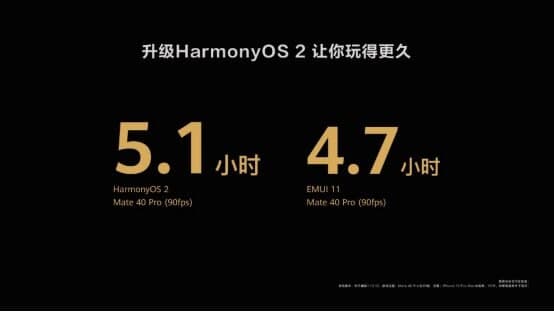
The heat problem in smartphones during the game is forcing the provider to reduce the number of frames, which unconsciously results in a poor gaming experience. But this is not the case with HM OS, it can still run full frames in most game scenes, conveying a better experience.
Alive Previously Used Applications in the background: No more need to restart
This part of the test includes over ten applications including Weibo, Taobao, Sina News Client, PUBG, QQ Music, etc.
The statics shows that after 4 hours the EMUI started to delete the cache and closed the most space-occupying application among them.
At first, EMUI closed the game – PUBG and re-loaded the shopping platform, Taobao then after 17 hours it closed all apps loading in the background.
Meanwhile, the PUBG and QQ Music are the only closed app in the case of HarmonyOS whereas Youku and iQiyi were reloaded, and other applications were preserved as it is.
Reason:
The application keep-alive rate of HarmonyOS is more advance than other systems. Furthermore, keep-alive capability for background application is also powerful in HM OS.
It can maintain and restore the state of Apps no matter how much you use them. Adding to this, the background application realizes state recovery and eliminates the chances of restarting any procedure. You can read the news, play music, and stream videos where you have left.
Battery Backup:
The battery backup test concluded in two phases. The first one is a three three-hour exhaustive endurance and the second one is a five-hour heavy endurance test. The first one doesn’t show any bigger difference but HarmonyOS still took the lead. We can’t overlook it as the smallest things are responsible for major changes.
Talking about the five-hour heavy battery life test, the advantages of HarmonyOS are very obvious and it can deliver up to 5.1 hours of gameplay, and more for the wispy applications.
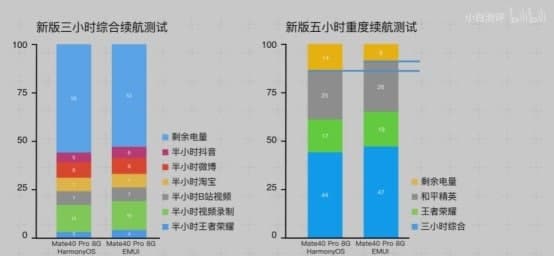
As per the test results, the HarmonyOS can provide 14% of battery power after three hours of continued usage of Douyin, Taobao, and Weibo and one hour of PUBG and King of Glory each. While the EMUI only retains 9% of the battery backup. (Read Full Story)
Conclusion:
Huawei is not only designed to deliver high-end performance but also provides a one-stop solution across multiple platforms. This powerful mobile software is the outcome of Huawei’s five-year hard work,
From app speed to battery capacity, Huawei HarmonyOS is ahead of the previous EMUI software system. It has a lot of benefits besides its features, which we haven’t discussed here.
Above all this Huawei will deliver this new OS on both Huawei and Honor smartphones. Furthermore, the HarmonyOS scheduled plan contains smartphones as age-old as 5 years.
At present, the beta activity is only for Chinese variants, but the company soon scheduled it for the global market also.
